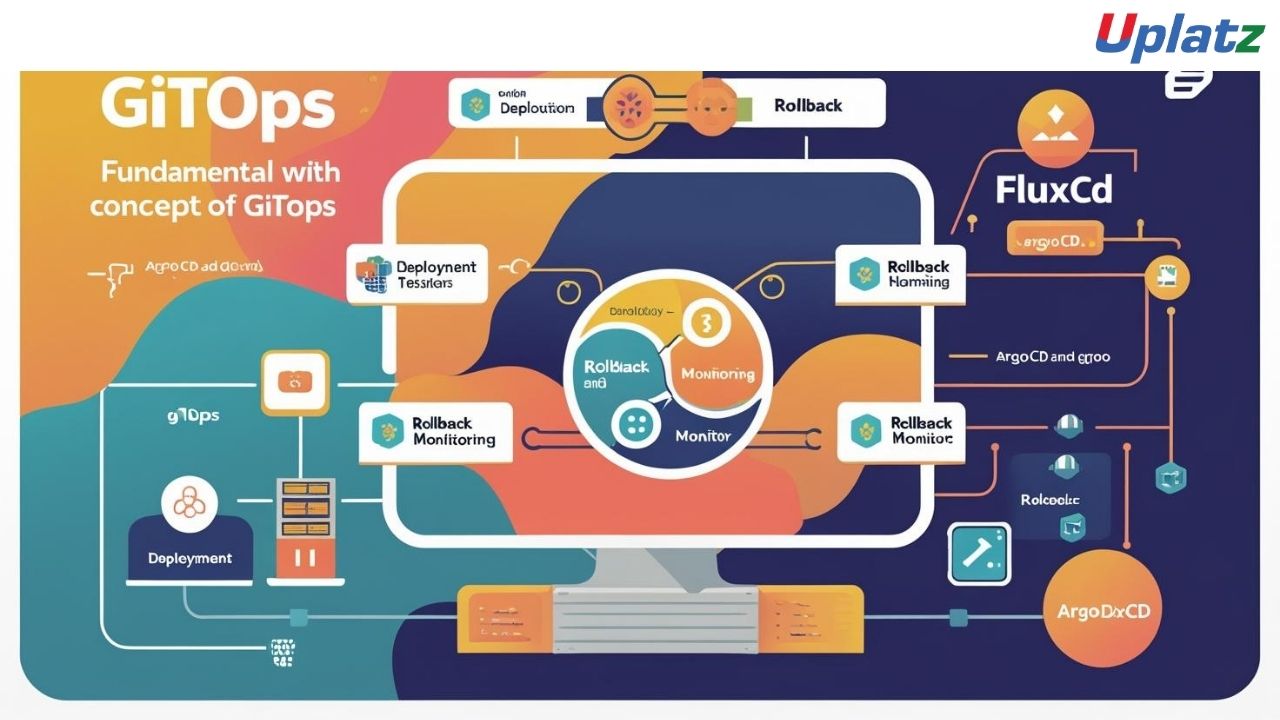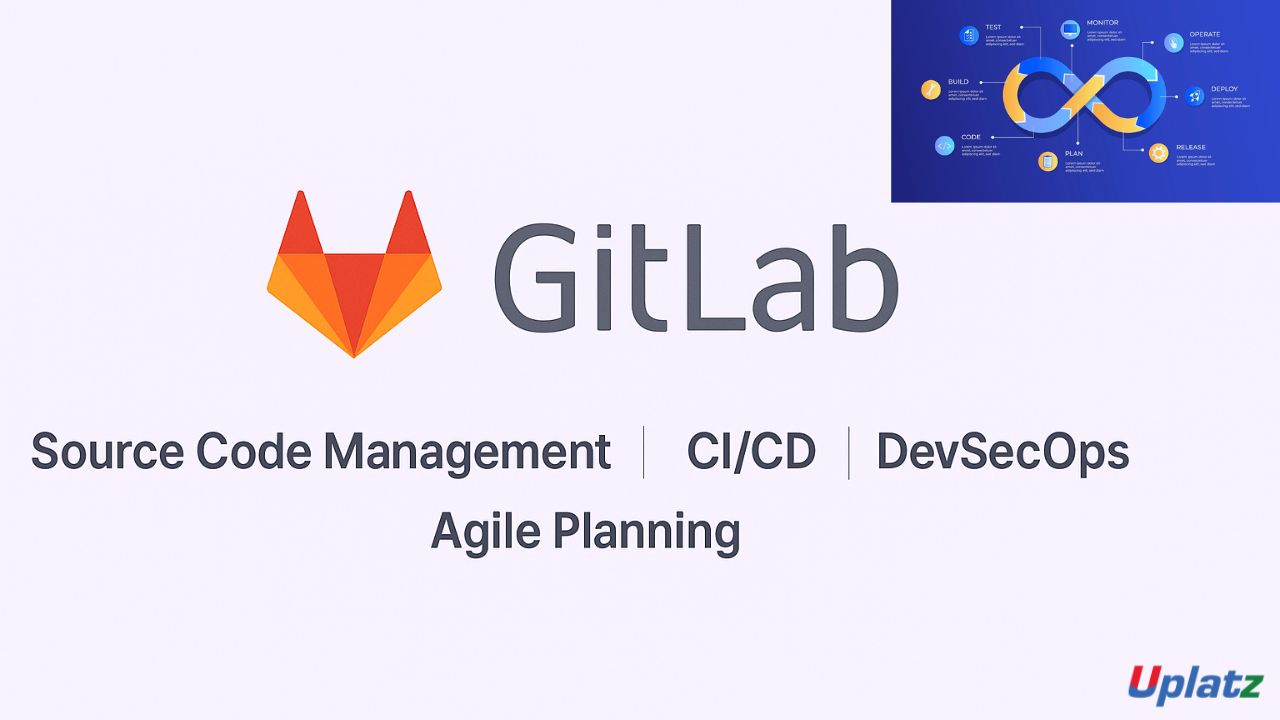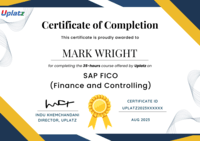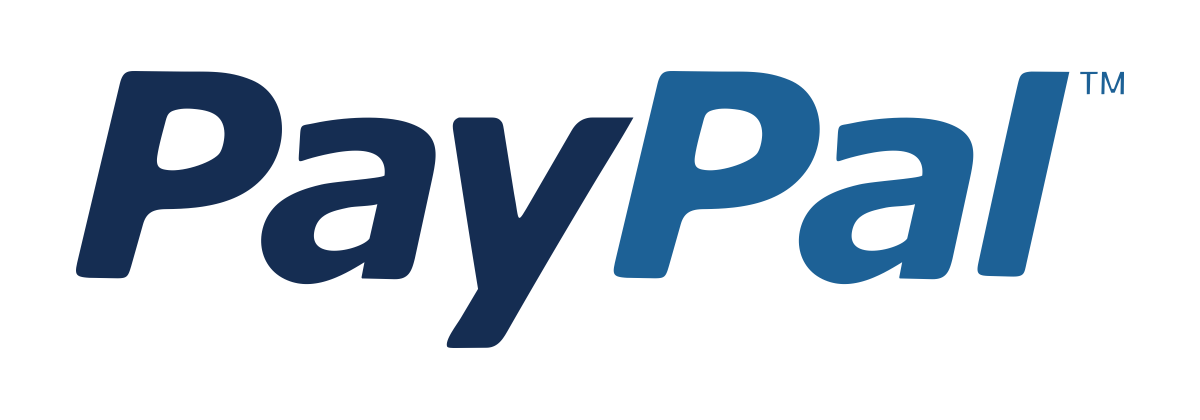ArgoCD
Master GitOps Continuous Delivery with ArgoCD to automate Kubernetes deployments and streamline application lifecycle management.Preview ArgoCD course
Price Match Guarantee Full Lifetime Access Access on any Device Technical Support Secure Checkout Course Completion Certificate 90% Started a new career
BUY THIS COURSE (
90% Started a new career
BUY THIS COURSE (GBP 12 GBP 29 )-
 82% Got a pay increase and promotion
82% Got a pay increase and promotion
Students also bought -
-

- GitOps Fundamentals using Argo CD and FluxCD
- 10 Hours
- GBP 12
- 10 Learners
-

- GitLab CI/CD
- 10 Hours
- GBP 12
- 10 Learners
-

- FluxCD
- 10 Hours
- GBP 12
- 10 Learners

ArgoCD is a powerful, GitOps-based continuous delivery tool for Kubernetes that automates the deployment and management of applications in a declarative, auditable, and scalable way. This self-paced, project-oriented online course is designed for developers, DevOps engineers, and cloud professionals seeking to master modern GitOps workflows and automated Kubernetes deployment pipelines.
Whether you’re new to Kubernetes or already familiar with CI/CD concepts, this course offers a structured path from foundational principles to enterprise-grade GitOps practices using ArgoCD. You’ll learn to define, deploy, and manage Kubernetes applications entirely from Git repositories, ensuring your clusters stay in sync with the desired state — automatically and reliably.
By the end of this course, you will have gained not only hands-on skills but also a deep architectural understanding of how GitOps changes the landscape of continuous delivery in cloud-native environments.
🔍 What is ArgoCD?
ArgoCD (Argo Continuous Delivery) is an open-source GitOps controller for Kubernetes. It continuously monitors your Git repositories to ensure that the actual state of your Kubernetes cluster always matches the declared desired state defined in version control. If configuration drift occurs — for example, if someone manually modifies a resource in the cluster — ArgoCD detects the difference and can automatically revert the change to maintain consistency.
ArgoCD introduces a paradigm shift from traditional CI/CD pipelines by bringing declarative deployment and version control-driven operations to Kubernetes. Instead of pushing configurations into the cluster, ArgoCD pulls changes from Git, providing immutable history, auditability, and complete transparency.
Key capabilities include:
-
Continuous monitoring and synchronization of applications
-
Automated deployment and rollback strategies
-
Role-Based Access Control (RBAC) and Single Sign-On (SSO)
-
Health status checks and visual dashboards
-
Integration with Helm charts, Kustomize, Jsonnet, and plain YAML
In short, ArgoCD enables you to adopt Git as the single source of truth for your infrastructure and applications.
⚙️ How ArgoCD Works
ArgoCD operates on the core GitOps principle: Git is the source of truth for declarative configuration, and automated agents continuously reconcile the cluster state with Git.
Here’s how it works:
-
Declarative Configuration: Developers commit Kubernetes manifests (YAML files, Helm charts, or Kustomize templates) into a Git repository.
-
Continuous Reconciliation: ArgoCD continuously checks whether the deployed resources match the configuration stored in Git.
-
Automated Synchronization: When a change is detected, ArgoCD updates the cluster automatically or on approval, ensuring the environment matches the desired configuration.
-
Health Monitoring: ArgoCD’s dashboard provides detailed insights into application status, sync health, and deployment history.
-
Drift Detection and Rollback: If any out-of-band change happens, ArgoCD flags the drift and can automatically restore the declared configuration.
This pull-based model enhances security, stability, and scalability by reducing manual operations and ensuring predictable infrastructure states.
🏭 How ArgoCD is Used in the Industry
ArgoCD has quickly become the industry standard for GitOps adoption in enterprises embracing Kubernetes. Top companies like Intuit, Adobe, Tesla, and Alibaba Cloud use ArgoCD to streamline multi-cluster management and enable self-healing, auditable delivery pipelines.
Typical real-world use cases include:
-
Multi-Cluster Application Management: Managing hundreds of Kubernetes clusters across development, staging, and production environments with consistent policies.
-
Automated Deployment Pipelines: Integrating ArgoCD with CI tools such as Jenkins, GitHub Actions, or GitLab CI to automate build-to-deploy workflows.
-
Zero-Downtime Upgrades: Using rolling updates, blue-green, or canary strategies with full rollback support.
-
Enterprise GitOps: Enforcing compliance, audit trails, and role-based permissions for teams in large organizations.
-
Observability and Monitoring: Connecting with Prometheus and Grafana to visualize sync health, deployment performance, and cluster drift.
By leveraging ArgoCD, organizations gain speed, reliability, and consistency across their deployment processes — critical for large-scale, cloud-native architectures.
🌟 Benefits of Learning ArgoCD
Learning ArgoCD equips you with the knowledge and practical skills to transform how you manage Kubernetes deployments.
Here’s what makes it a must-have for every cloud professional:
-
Adopt GitOps Best Practices: Manage your deployments entirely through version-controlled Git workflows.
-
Improve Deployment Reliability: Eliminate manual errors through automated synchronization and rollback.
-
Enhance Security and Compliance: Gain audit trails and visibility across clusters.
-
Accelerate Delivery: Shorten deployment cycles while maintaining full traceability.
-
Master Multi-Cluster Environments: Deploy and manage applications at scale across multiple clusters or regions.
-
Career Advancement: GitOps and Kubernetes are top in-demand skills for modern DevOps and cloud engineering roles.
By mastering ArgoCD, you’ll be prepared to lead GitOps transformations, build high-availability CI/CD pipelines, and ensure production-grade Kubernetes operations.
📘 About This Course
This course is structured to give you hands-on, practical experience while ensuring a clear conceptual foundation. You’ll start by understanding the core ideas behind GitOps and Kubernetes, then progressively dive deeper into ArgoCD installation, configuration, and advanced workflows.
Key modules include:
-
Introduction to GitOps and ArgoCD Concepts
-
Installing and Configuring ArgoCD (on Minikube, EKS, or GKE)
-
Defining and Syncing Applications
-
Automated Deployments and Rollbacks
-
Multi-Cluster Management and Environment Promotion
-
Integrations with Helm, Kustomize, and CI Systems
-
Security and RBAC Configurations
-
Monitoring with Prometheus and Grafana
-
Troubleshooting and Drift Detection
Each module includes video lectures, interactive labs, and real-world projects that let you deploy actual workloads in a GitOps workflow. You’ll build and test your pipelines step by step, ensuring you can apply your knowledge immediately in production-like environments.
👩💻 Who Should Take This Course
This course is ideal for professionals aiming to automate Kubernetes delivery pipelines and adopt GitOps in their organization, including:
-
DevOps Engineers: Streamline deployment workflows using automation and GitOps principles.
-
Cloud Engineers: Manage Kubernetes clusters with scalable, version-controlled deployment strategies.
-
Developers: Learn how to continuously deliver applications using Git as the deployment source.
-
Solutions Architects: Design and implement GitOps pipelines for enterprise infrastructure.
-
Students and Professionals: Prepare for cloud certifications and enhance DevOps career opportunities.
Both beginners and experienced professionals will find value — from step-by-step walkthroughs for newcomers to advanced configuration and multi-cluster management for seasoned engineers.
🧩 Course Structure and Learning Format
This is a self-paced course designed for flexible and immersive learning. Each module blends theory, demonstration, and application to ensure full mastery.
Each module includes:
-
HD video lessons with real Kubernetes demos
-
Step-by-step labs for hands-on practice
-
Downloadable manifests and YAML templates
-
Assignments and quizzes for reinforcement
-
Community discussion forums for peer learning
-
Final project integrating CI, CD, and GitOps with ArgoCD
You’ll also get lifetime access to course materials and updates, ensuring you stay aligned with the latest ArgoCD and Kubernetes releases.
🚀 What You’ll Be Able to Do
By completing this course, you’ll gain the skills to:
-
Deploy and manage applications in Kubernetes using GitOps workflows.
-
Install, configure, and secure ArgoCD in production environments.
-
Integrate ArgoCD with Helm charts, Kustomize, and CI tools.
-
Manage multi-environment and multi-cluster deployments.
-
Automate rollbacks, drift detection, and state synchronization.
-
Design scalable, auditable, and reliable continuous delivery pipelines.
You’ll graduate with the confidence to implement GitOps strategies in real-world enterprise environments and drive cloud-native automation initiatives.
🎯 Final Takeaway
The future of DevOps lies in declarative, Git-driven automation — and ArgoCD is at the center of that transformation. It redefines continuous delivery by turning Git into the single source of truth for application and infrastructure management.
This course empowers you to go beyond traditional CI/CD, teaching you how to design, automate, and operate robust Kubernetes deployments using GitOps best practices. Whether you aim to improve deployment reliability, reduce operational complexity, or scale production systems, mastering ArgoCD will set you apart as a forward-thinking DevOps professional ready for the next generation of cloud automation.
Course/Topic 1 - Coming Soon
-
The videos for this course are being recorded freshly and should be available in a few days. Please contact info@uplatz.com to know the exact date of the release of this course.
-
Understand GitOps principles and how ArgoCD applies them to Kubernetes.
-
Install and configure ArgoCD in local and cloud-based clusters.
-
Manage and deploy applications declaratively using Git repositories.
-
Work with Kubernetes manifests, Helm charts, and Kustomize overlays.
-
Implement automated sync, rollback, and drift detection.
-
Secure ArgoCD using RBAC, SSO, and TLS best practices.
-
Integrate ArgoCD with CI pipelines and popular DevOps tools.
-
Monitor and troubleshoot ArgoCD applications using health checks and logs.
-
Manage multi-cluster deployments and environment promotions.
-
Apply advanced GitOps workflows for enterprise-scale Kubernetes.
- What is GitOps?
- Why ArgoCD for Continuous Delivery?
- ArgoCD Architecture and Components
- Setting up ArgoCD on Minikube or Managed Kubernetes
- CLI vs Web UI Usage
- Securing the ArgoCD API Server
- Defining Applications in ArgoCD
- Application Sync Policies (Manual vs Automatic)
- Health Status and History
- Declarative Deployment Basics
- Git Repository Structures for Environments
- Syncing and Rollback Mechanisms
- Deploying Helm Charts via ArgoCD
- Using Kustomize for Environment Overlays
- Managing Multi-Environment Configurations
- Role-Based Access Control (RBAC)
- Implementing Single Sign-On (SSO)
- TLS and Secure Access Configuration
- Application Drift Detection
- Using ArgoCD Logs and Events
- Integrating Grafana and Prometheus
- Progressive Delivery (Canary and Blue-Green Deployments)
- Automated Rollbacks and Sync Waves
- Multi-Cluster Management
- Integrating ArgoCD with CI/CD tools (Jenkins, GitHub Actions)
- Webhooks for Automated Deployments
- Notifications with Slack or Email
- Deploying a Microservices Application via GitOps
- Multi-Cluster Application Rollout
- GitOps for Infrastructure-as-Code with ArgoCD
- Scaling ArgoCD for Large Teams
- Policy Enforcement with OPA/Gatekeeper
- Disaster Recovery and Backup Strategies
Upon completion, you’ll earn a Certificate of Completion from Uplatz, validating your expertise in GitOps and Kubernetes continuous delivery using ArgoCD. This certification proves your ability to manage automated deployments, secure delivery pipelines, and handle real-world Kubernetes workflows. It demonstrates both hands-on experience and theoretical understanding, making it highly valuable for DevOps, Cloud, and Platform Engineering roles. This credential strengthens your professional profile, improves employability, and establishes you as a practitioner skilled in modern GitOps practices adopted by top tech companies.
- Automate deployments, reducing manual errors and downtime.
- Work with multi-cloud and hybrid Kubernetes environments.
- Align with modern DevOps practices embraced by enterprises and startups.
- What is ArgoCD, and how does it relate to GitOps?
ArgoCD is a declarative, GitOps-based continuous delivery tool for Kubernetes. It syncs cluster state with a Git repository, automating deployments and ensuring auditable workflows. - How does ArgoCD differ from traditional CI/CD tools like Jenkins?
Traditional CI/CD tools push changes into clusters, while ArgoCD uses a pull-based model, syncing cluster state from Git repositories for improved security and traceability. - What are the core components of ArgoCD?
ArgoCD consists of the API server, repository server, application controller, and a web UI for managing and monitoring applications. - Explain drift detection in ArgoCD.
Drift detection identifies when the live cluster state deviates from the Git-declared desired state, prompting re-sync or rollback. - How does ArgoCD integrate with Helm?
ArgoCD supports deploying Helm charts directly, rendering templates and managing version-controlled releases from Git repositories. - What is the difference between automatic and manual sync policies?
Automatic sync applies changes as soon as they’re detected in Git, while manual sync requires user approval to deploy updates. - How is RBAC implemented in ArgoCD?
ArgoCD uses role-based access control with predefined roles and custom policies defined in a configmap to manage permissions. - What are sync waves in ArgoCD?
Sync waves define the order of resource application during sync, ensuring dependencies (like CRDs) are applied first. - How do you secure an ArgoCD deployment?
By enabling TLS, using SSO providers, applying RBAC, and restricting access via network policies and secrets management. - What is the role of ApplicationSets in ArgoCD?
ApplicationSets automate creating multiple similar applications across clusters or environments using templates and generators.









